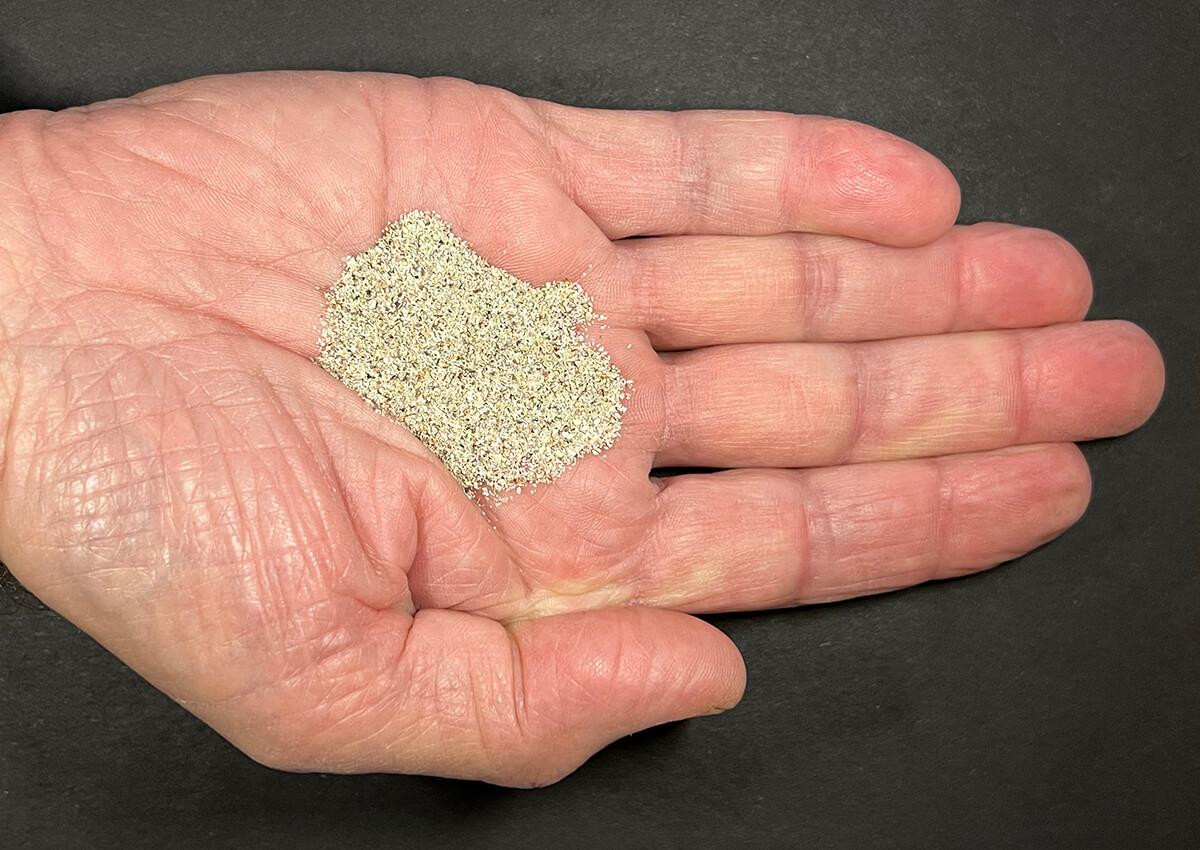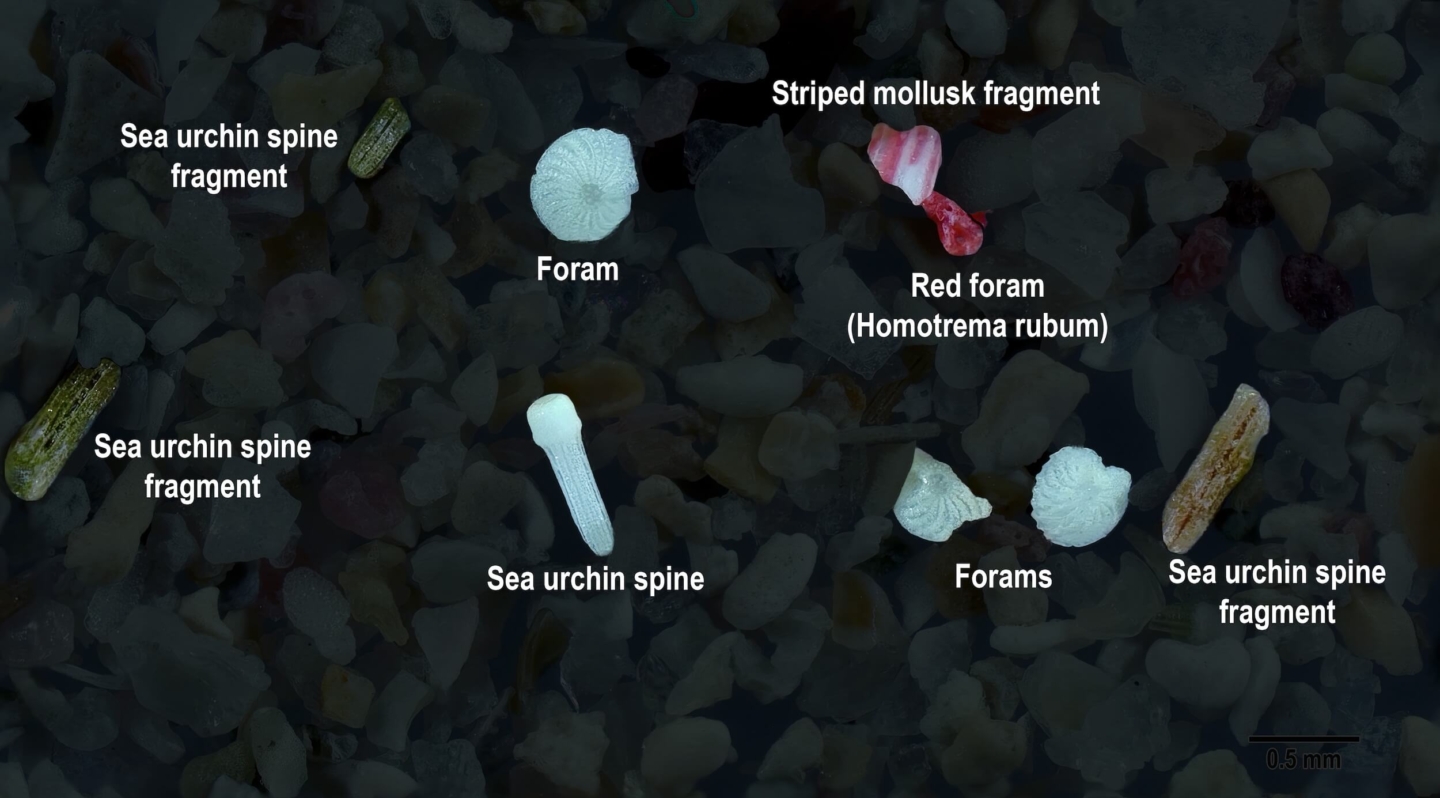Geographic Overview
The Doigahama site is located in the center of the small plain on the coast of Hibiki Bay, where stunning white sand dunes form perpendicular to the clear blue Sea of Japan. Historically it was a gateway from the Asian continent. It is also an archaeological necropolis where 240 sets of 2,500 year-old remains have been excavated. The excavated human skeletal remains at Doigahama site have expanded our understanding of the roots of the Japanese people.
Sand Gallery

Low magnification of small, white, tan, pink and red grains that are fragmented remains of a spectrum of marine organisms

White, tan and purple finely striated pieces of mollusk shells are present among a mixed variety of white and translucent marine fragments.

Purple mollusk shell fragments are present along with a variety of smoothly worn shards plus small pieces of sea urchin spine. A transparent sea urchin spine is at the center of the image with an off-white urchin spine a short distance to the right of the center sea urchin spine.

The characteristic linear grooves of sea urchin spine fragments are present at the middle left and right edges along with a white sea urchin spine near the center of this image. In addition to the colorful pink, red and purple shell fragments, there are circular multichambered foraminifera organisms present with the most predominant one just to the left of upper center.

This higher magnification of figure 4 shows the detail of the circular multichambered foraminifera test.

Details of pink, red, purple and tan shell pieces along with a variety of smoothly worn transparent and translucent marine fragments are present in this sample. All sand grains have smooth edges as a result of wear from wave action.






